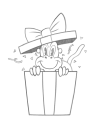$222.12
$278
You save $55.88
assignments 210 submissions
This assignment is so much fun! Also using translucent paper to try things out without redrawing the entire image from scratch is such an awesome idea.
Curiously, it seems that in Australia the word 'vellum' is not in much use. The only 'vellum' I found in Sydney was an old pack of absolutely gorgeous Arches drawing paper. I wouldn't have noticed it if I wasn't looking for 'vellum' 😉
LESSON NOTES
What's in Premium?
- Learn how to create captivating optical illusions with isometric drawings.
- Transform flat shapes into 3D illusions by adjusting line weights and contrasts.
- Understand the trick of reversing depth perception by swapping line overlaps.
- Get practical tips on drawing your own illusions using simple tools like graph paper or tracing methods.
- Explore works by artists like Sandro del Prete and learn how to develop your own unique illusions.
- Embrace the challenge and enhance your drawing skills through these engaging techniques.
Get this lesson and more in the premium course!
DOWNLOADS
assignment-isometric-optical-illusions.mp4
212 MB
assignment-isometric-optical-illusions-transcript-english.txt
5 kB
assignment-isometric-optical-illusions-transcript-spanish.txt
6 kB
assignment-isometric-optical-illusions-captions-english.srt
9 kB
assignment-isometric-optical-illusions-captions-spanish.srt
10 kB
ASSIGNMENTS
Study examples of optical illusions in isometric perspective, replicate them, and then experiment with creating your own.
Check out the lesson notes for more details!
I tried a couple. I had two ideas that I wanted to try. One was a brick wall where the bricks could be seen as protruding or receding and the other is two buildings overlapping each other with the windows alternating to suggest both are in front. I think I got impatient and the lines aren't always perfect and I tried shading/ cross hatching some of the planes. I will say that the buildings feel are more successful than the wall. Hopefully as I do more and spend more time the drawings will feel more consistent and neat?
I need to do this again using triangles. I definitely am going to keep practicing this, it was a lot of fun.
•
1mo
What a fun project. I've never really played with optical illusions like this before so it is fun to get the brain thinking that way.
First time drawing with tools like this, it was interesting. A lot of triangle flipping, but I’m excited to do a few more of these later.
I decided to go both ways for this assignment (traditional and digitally) all freehand.
here are my submissions! I chose to do these on Procreate with an Ipad using an isometric grid. It took me a while for my brain to start understanding how certain optical illusions worked and having the Isometric grid helped me understand them a lot quicker. I started with simple illusions like the triangle and rectangle arches, working up to some overlapping jumbles , and ending with an attempt to make a confusing "castle" thing.
Here are my attempts, I tried to do the exercises both with the rulers and freehand, I even tried to invent one. The Penrose stairs was a bit difficult, it took me several try to understand how to do it.
I did a more basic one, then the more complex one and the one with shading, I was also practicing how to do all the degrees with the different triangles
Just finally had the time to start the class. I tried to quickly scribble a random shape without thought and see if I could make it work.
Gave this assignment a second pass after obtaining some graph paper and hearing what Marshall said about their benefits. It helped a lot and freed me up to experiment with forms without worrying about keeping lines perfectly parallel. I always tend to want to converge them because I've never studied isometric before. Some of these are my own creations and some are studies of what others have done.
Here is mine! Like other students I saw below, I did feel the instruction video was very vague on actually showing us how to use our new instruments and I had to follow a YouTube video one student kindly shared (https://www.youtube.com/watch?v=7t4ycR3fXJ4). But after some practice I started to get the hang of it and really enjoyed it!
I was a little lost with this one, specifically how to draw cubes with a T Square and Triangle. This video helped me a lot. https://www.youtube.com/watch?v=7t4ycR3fXJ4
I had a lot of fun with these! It's been forever since I used a t-square or triangle, so this was a great chance to get re-acquainted.














